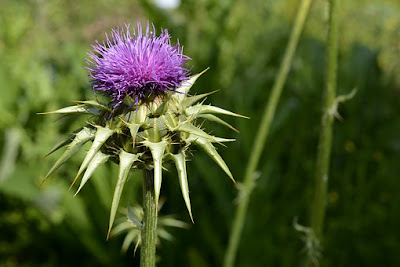Scientific Name: Campanula takesimana Nakai
Description:
Campanula takesimana Nakai, commonly known as Korean bellflower, is a perennial herbaceous plant belonging to the Campanulaceae family. It is native to Korea and is noted for its attractive, bell-shaped flowers that are usually white or pale pink with purple spots. The plant grows to a height of about 30-60 cm (12-24 inches) and has heart-shaped leaves with serrated edges. The flowers bloom in late spring to summer, providing a striking display in gardens.
Parts Used:
Roots, Leaves
Medicinal Properties and Uses:
Anti-inflammatory: The roots of Campanula takesimana are used to reduce inflammation in various conditions, helping alleviate symptoms associated with inflammatory diseases. It has been used in traditional medicine to reduce swelling and treat conditions like sore throat and gum diseases.
Antioxidant: Compounds in the plant possess antioxidant properties that can help protect cells from oxidative stress and damage caused by free radicals.
Wound Healing: The leaves believed to promote healing and reduce infection due to their antimicrobial properties.
Respiratory Health: Campanula has been used to treat respiratory ailments like coughs and bronchitis. The plant is believed to act as an expectorant, helping to loosen phlegm and ease breathing.
Immune Support: The roots and leaves may help boost the immune system, making the body more resistant to infections and illnesses.
In traditional Korean medicine, Campanula takesimana is often used in herbal formulations and remedies, emphasizing its importance in natural health practices. However, more scientific research is needed to fully validate and understand the extent of its medicinal properties and efficacy.
Tea : Leaves or flowers of certain Campanula species can be dried and used to make herbal tea. This is a common method for consuming the plant for respiratory or digestive issues.
Topical Application: For skin conditions or wounds, a poultice made from the leaves or a salve can be applied to the affected area.
Precautions and Side Effects:
Allergic Reactions: As with many plants, there is a risk of allergic reactions, especially for those with sensitivity to plants in the Campanulaceae family.
Pregnancy and Breastfeeding: Due to the lack of comprehensive studies on its effects during pregnancy and lactation, it is generally recommended to avoid using Campanula in these conditions.
Interactions with Medications: Individuals on medication, especially diuretics or anti-inflammatory drugs, should consult with a healthcare provider due to potential interactions.
Quality and Identification: Proper identification and sourcing are crucial as some species in the Campanula genus might not be suitable for medicinal use, and misidentification could lead to adverse effects.
As with any medicinal plant, it's important to use Campanula cautiously and under the guidance of a qualified herbalist or healthcare provider, especially if it's being used to treat specific health conditions.
Always consult with a healthcare professional before using any medicinal plant for health purposes.

















